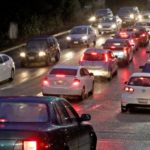 Faced with worsening traffic congestion and hazardous air quality, cities across Europe are stepping up efforts to limit vehicle numbers on their streets. Their goal? To cut pollution and improve life for residents and commuters alike. For many, this means implementing Low Emission Zones (LEZs) in busy urban centers.
Faced with worsening traffic congestion and hazardous air quality, cities across Europe are stepping up efforts to limit vehicle numbers on their streets. Their goal? To cut pollution and improve life for residents and commuters alike. For many, this means implementing Low Emission Zones (LEZs) in busy urban centers.
Major cities like Berlin, London, Milan, and Stockholm have led the charge, each with their own twist on LEZs. Some cities restrict certain types of vehicles, while others use staggered entry based on license plate numbers or charge “congestion fees” for access to central areas.
Understanding the impact
In an effort to shed light on the impacts of these measures, researchers at IESE Business School studied the LEZ program in Madrid, one of Europe’s strictest, which bans most vehicles from central areas of the Spanish capital. Madrid launched this program in November 2018 after years of fines for failing to meet EU air quality standards. The move hasn’t been without resistance: just last month, a Madrid court annulled the LEZ, arguing the city hadn’t fully assessed its economic impact—a decision currently under appeal.
LEZs have sparked heated debates elsewhere too. London saw protests earlier this year as the city expanded its Ultra Low Emission Zone (ULEZ). Measuring LEZ impact is complex, since these zones influence not only residents but also those who commute in for work. Most studies have focused on LEZ benefits like reduced traffic, cleaner air, and improved public health. But creative workarounds by drivers, like rerouting to avoid zones, sometimes dilute their effectiveness.
LEZs also carry economic costs, often indirect, affecting both consumers and local businesses. These costs can include lost sales for shops, higher commuter expenses, and lost work hours. For LEZs to gain lasting public support, policymakers must weigh environmental gains against these economic impacts. Many want greener cities, but they also want thriving business districts.
Improving air quality
IESE’s study found that Madrid Central did improve air quality. After controlling for weather, holidays, and other factors, they recorded a 19% reduction in nitrogen dioxide (NO?) levels. Importantly, the LEZ didn’t simply push pollution to the city’s edges; people actually drove less rather than just skirting around restricted areas. Congestion also dropped—traffic data from over 4,000 sensors showed a 16% reduction in the LEZ.
But what about businesses? Using credit and debit card data, the researchers looked at consumer spending patterns within the LEZ, focusing on shoppers from outside the area who could no longer drive into the city center. They found brick-and-mortar sales in the zone dropped by 21% among this group. Some of that spending shifted online, with a 12% uptick in online purchases by out-of-area shoppers. Yet online gains didn’t fully make up for lost foot traffic, leaving smaller businesses to bear the brunt.
This doesn’t mean cities shouldn’t restrict traffic; on the contrary, the benefits of cleaner air and less congestion are clear. But as LEZs spread, policymakers should consider ways to support businesses within these zones. Pairing traffic restrictions with stronger public transport and targeted business relief could help balance environmental and economic goals.